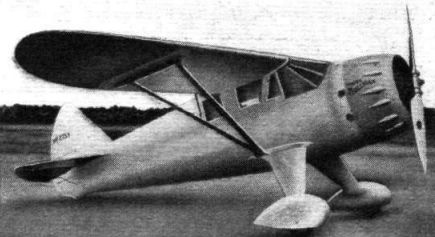
Варианты
- Howard - DGA-6, -7, -8, -11, -12 - 1935 - США
- Howard - DGA-15 - 1939 - США
Самолеты Howard
Бен Ховард спроектировал и построил свой первый самолет Howard DGA-1 (полное название - "Damned Good Airplane 1") в 1933 году, а в 1937 году он уже основал свою компанию "Howard Aircraft Corporation". Ховард спроектировал и построил такие известные гоночные самолеты, как DGA-3 Pete, DGA-4 Ike и DGA-5 Mike, а венцом его работы стал четырехместный моноплан DGA-6 Mister Mulligan, который выиграл все три главные американские авиагонки в 1935 году. В 1936 году на базе DGA-6 был создан коммерческий самолет DGA-8, а в 1937 году - самолет DGA-9, отличавшийся только силовой установкой. Затем появились DGA-11 и DGA-12, оснащенные другими двигателями, и следом уже был выпущен четырех-/пятиместный кабинный моноплан DGA-15.
<...>
ВВС Армии США мобилизовали 19 гражданских самолетов для использования их в качестве легких транспортных и связных самолетов. Они получили обозначения UC-70 (DGA-15P), UC-70A (DGA-12), UC-70B (DGA-15J), UC-70C (DGA-8) и UC-70D (DGA-9). Все эти самолеты оставались на вооружении ВВС Армии и ВМС США на протяжении нескольких лет.
<...>
Описание:
- Самолеты Howard
- Flight, March 1935
FOR LONG-DISTANCE RACING
Фотографии
-
Flight 1935-03 / Flight
[DGA-6] Mr. "Benny" Howard's latest racing machine,
-
Flight 1936-08 / Flight
Sired by a racer: The new Howard four-seater (Whirlwind 320) developed from the indefatigable Mr. Mulligan.
-
Jane's All the World Aircraft 1938 / 03 - All the world's aeroplanes
Регистрационный номер: NC14871 The Howard DGA-11 Four-seat Cabin Monoplane (450 h.p. Pratt & Whitney "Wasp-Junior" engine).
-
Jane's All the World Aircraft 1938 / 03 - All the world's aeroplanes
The Howard DGA-8 Four-seat Cabin Seaplane (320 h.p. Wright "Whirlwind" engine).
- Фотографии



